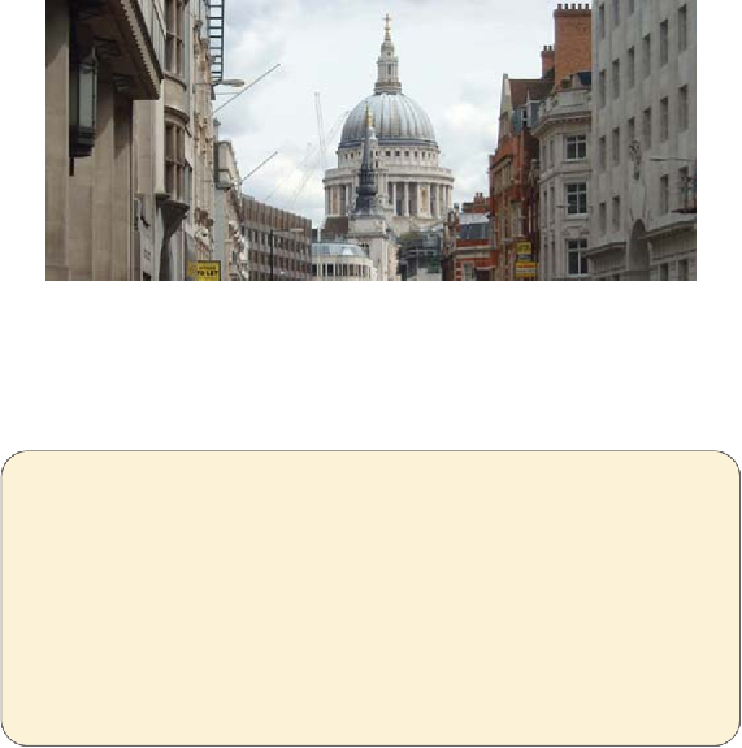Travel Reference
In-Depth Information
Standing here in September of 1666, you'd see nothing but smoke and ruins. The
Great Fire razed everything, including the original St. Paul's Cathedral. And standing here
a year earlier, in September of 1665, you'd hear “Bring out yer dead!” as they carted away
70,000 victims of the bubonic plague. After the double-whammy of plague and fire, the
architect Christopher Wren was hired to rebuild St. Paul's and The City.
Christopher Wren (1632-1723)
After London burned, King Charles II turned to his childhood friend, Christopher
Wren, to rebuild it. The 33-year-old Wren was not an architect, but he'd proven his
ability in every field he'd touched: astronomy (mapping the moon and building a
model of Saturn), medicine (using opium as a general anesthetic, making successful
blood transfusions between animals), mathematics (a treatise on spherical trigono-
metry), and physics (his study of the laws of motion influenced Newton's “discov-
ery” of gravity). Wren also invented a language for the deaf, studied refraction and
optics, and built weather-watching instruments.

